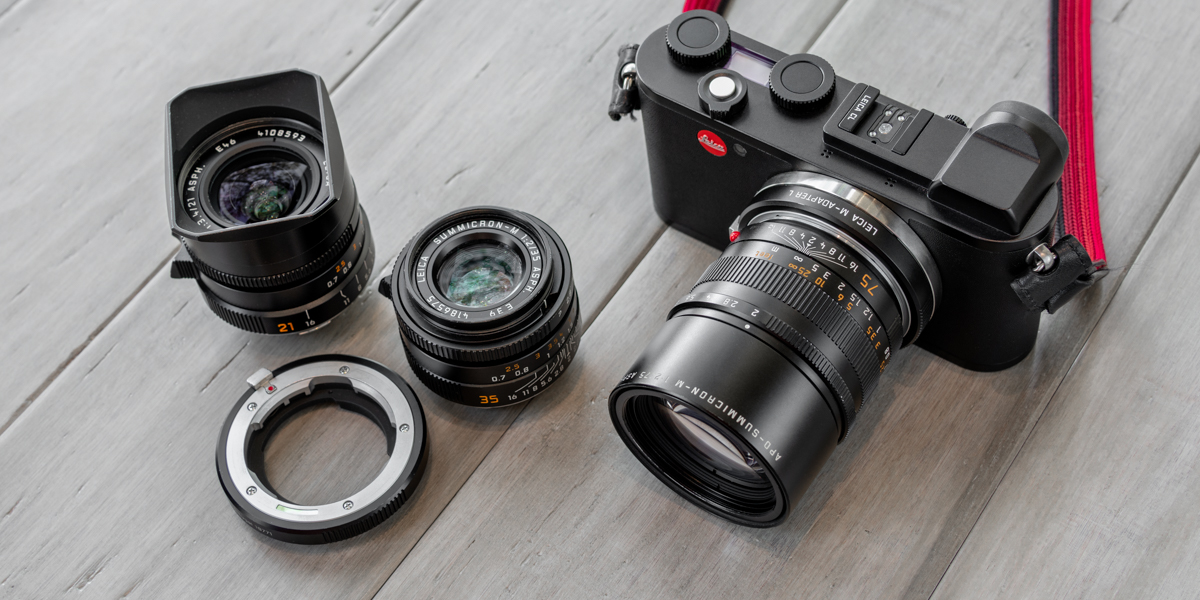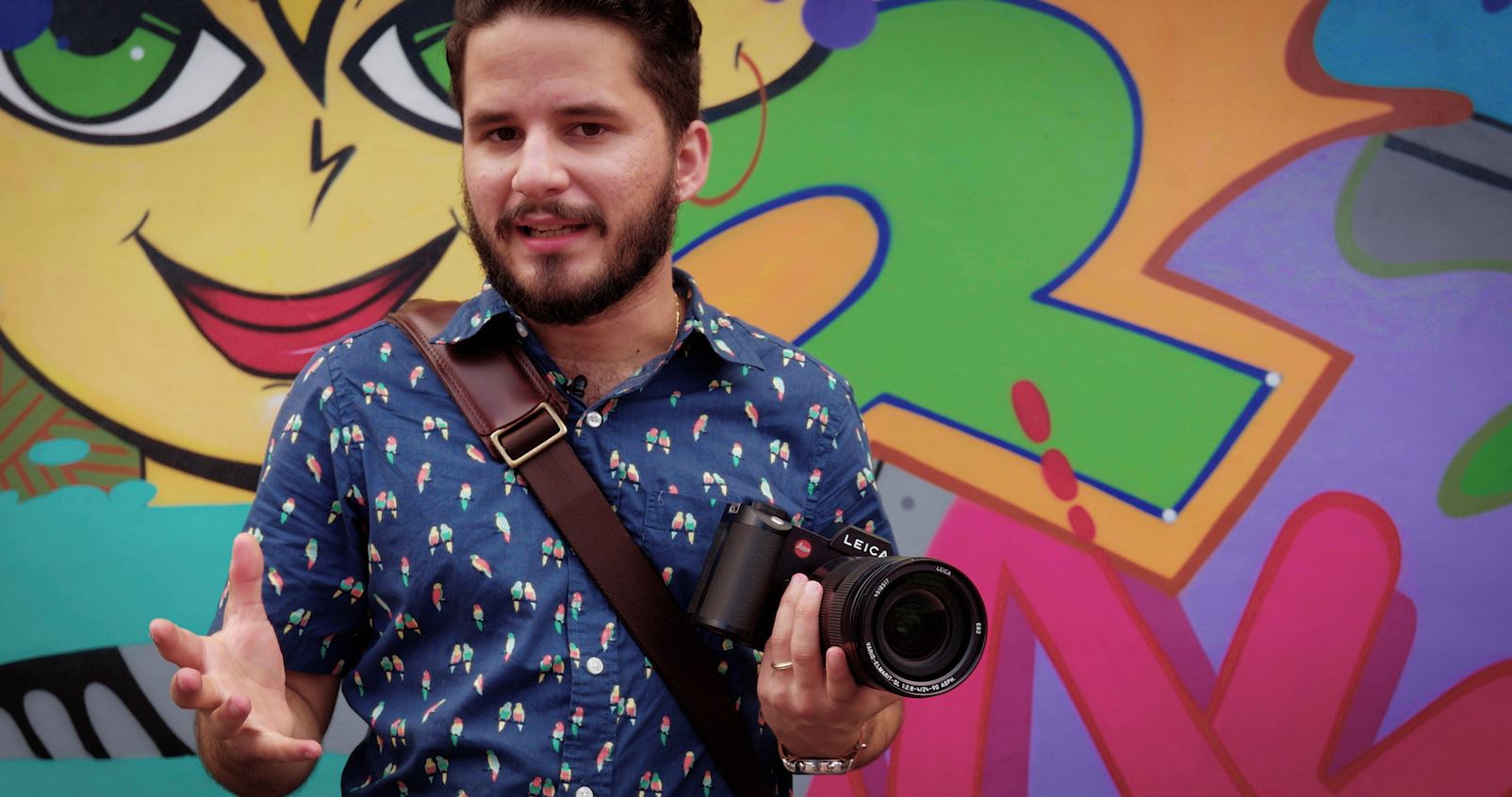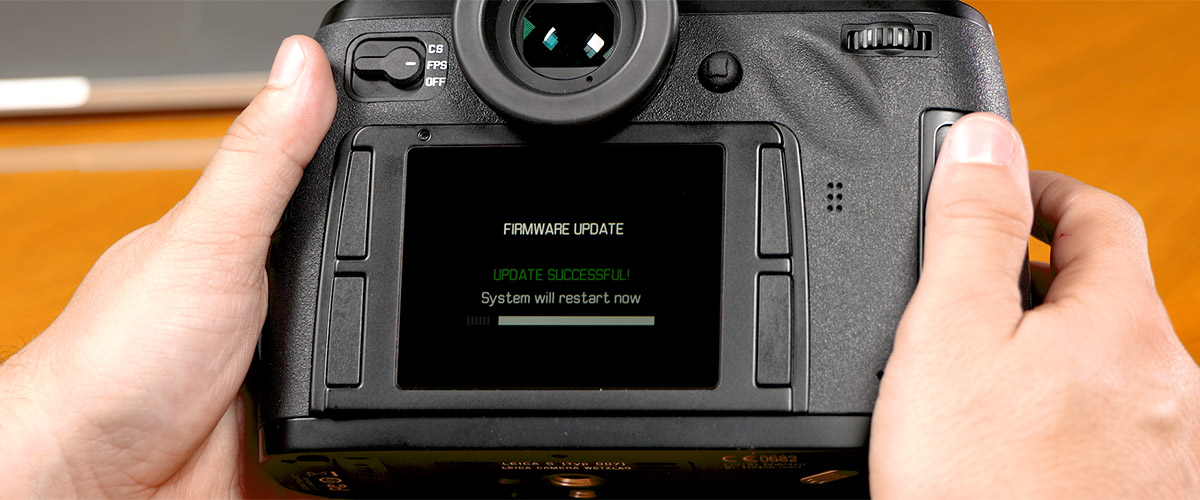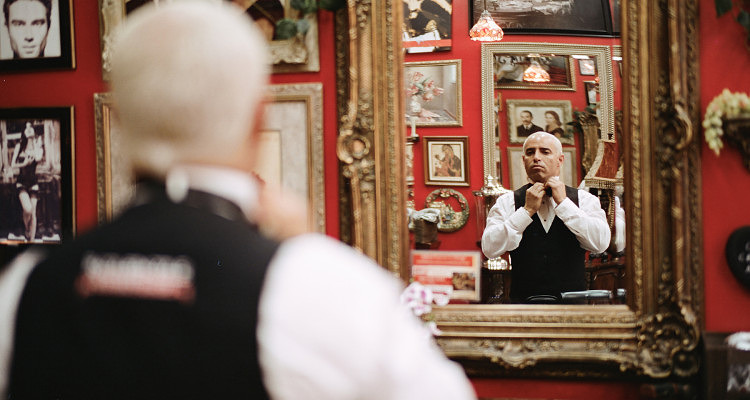Luis Mora wrote a new post, Using M Lenses on the Leica CL: New City, New Camera, Familiar Glass 5 years, 12 months ago
I’m never without a camera on my shoulder. No camera, no pictures. Everyday moments are there to be captured, and I’m always ready. Some mornings, that familiar analog itch hits. I grab my trusty, battle-worn M6, […]

Luis Mora wrote a new post, Shooting the “New” Leica 28mm Summaron-M in Little Havana 7 years, 6 months ago
Ever since Leica announced that they were reissuing the 28mm Summaron-M, I could’t wait to get my hands on one. I love classic Leica glass. The feel of the images. The vintage styling on the front of my M. The c […]
Thanks! The video was all recorded with the SL. Most of the footage was shot with the 35mm Summilux-TL, the beginning tracking shots were with the 23mm Summicron-TL, and the close-up beauty shots were with the 24-90 SL.
So David, who was the video shooter? Nice work.
Jack,
Thanks! I shot and edited the video.
Bernard,
Yes, this is planned for the future for sure. There is a lot of uncertainty surrounding best practices for video. So many variables.
I will certainly inquire about the ACES workflow, and work to educate myself more on this evolving standard.
Thanks for the feedback.
Scott,
There is an audio adapter for the SL to accept 3.5mm miniphone input and also provides a 3.5mm headphone jack for monitoring.
For capturing video, I use a Video Devices PIX-E5H 5″ recording monitor which takes the clean feed off the sensor over HDMI. This allows me to record at 10-bit 422 rather than 8-bit 420 to the SD card. There are other advantages besides the improvement in image quality, but this is a big one. The PIX-E uses the Apple ProRes 422 codec so Final Cut X workflow would be great. I just prefer the Adobe CC ecosystem and work on both Mac and PC, so cross-platform compatibility is important for me.
For audio, I use the Sennheiser AVX wireless mic system. Handles loud environments with ease. The system is about as close to plug-and-play as you can get. For audio recording, I use the PIX-LR audio interface adapter for the PIX-E5. It attaches on the bottom and allows the use of two XLR inputs. The audio sounds amazing, thanks to the implementation of the legendary Audio Devices analog pre-amps and analog limiters.
I'm hoping to publish and article, a video guide or both on best practices for SL video shooting and post-production workflow.
Loved the lenses. The video is extremely well done. Luis you sounded like narrator on a NG special, great.
Scott
This video was shot in L-Log, but all of my Photokina reporting was done without shooting in Log. Log gives you more ability to adjust your look later and gives more flexibility in the files.
I apply a LUT in Premiere Pro CC in the Lumetri Color controls. For past videos, I've created my own 3D LUT in Davinci Resolve by using a Datacolor SpyderChecker. For this video of Luis in Little Havana, I decided to try something else, so instead used a stock ARRI Alexa LUT that comes pre-loaded into Premiere. The result was a nice “Miami” look. The only downside was losing some of my highlight detail, but the overall look is really nice. Much of color grading is subjective.
Whether shooting in Log and applying a LUT or recording straight with no Log, I still color correct (grade) all my clips so that they have a color continuity through the whole project. I do this through the use of adjustment layers in Premiere Pro, again with Lumetri color controls.
I've never used Final Cut, so can't speak to how this would work under that workflow.
Luis Mora commented on the post, 24-90 Zoom vs. M Lenses on the Leica SL (Typ 601) 7 years, 7 months ago
In reply to: Luis Mora wrote a new post, 24-90 Zoom vs. M Lenses on the Leica SL (Typ 601) A question that keeps coming up again and again is whether people should be shooting with M lenses or the 24-90 zoom on the Leica SL (Typ 601). A lot of Leica photographers have shied away from the zoom due to t […] View
View I personally don't like to use the hood on the 24-90 because not only does it add length to the lens, its actually not that necessary (in my opinion at least). The M lenses have such small hoods that they don't really detract from my shooting experience so I don't bother removing them.
Luis Mora wrote a new post, How To Update Firmware on the Leica S (Typ 007) 7 years, 8 months ago
In our continuing effort to make firmware updates as simple and painless as possible, we've just published an instructional video for updating firmware on the Leica S (Typ 007). From downloading the latest […]

Luis Mora wrote a new post, 24-90 Zoom vs. M Lenses on the Leica SL (Typ 601) 7 years, 10 months ago
A question that keeps coming up again and again is whether people should be shooting with M lenses or the 24-90 zoom on the Leica SL (Typ 601). A lot of Leica photographers have shied away from the zoom due to t […]

Luis Mora wrote a new post, CineStill films and the resurgence of analog photography 8 years, 10 months ago
Film is making a resurgence. Whether this is the final gasp of air or a new breath of life has yet to be determined. While big names like Kodak and Fuji are cutting production of once iconic photographic mediums, […]


I enjoyed reading this. I particularly like the rich saturated colors. I have a CL and the M-to-L adapter but have not tried any M glass yet. Maybe a 21 M lens is in my future.
Jeff, I think that's one of my favorite things to do with the CL as well – experimenting with vintage M glass can be fun especially with the crop factor making a 50mm f/1.4 the perfect portrait lens!
Merv, thanks for the great feedback! You definitely should give some of the CL prime lenses a try – especially the 35 f/1.4 and 60 f/2.8. They are stunning and I would say as sharp as any M lens I've used. I find the autofocus fast enough for most things personally. I also just use a center point focus spot and recompose as needed, which I find to be the fastest approach. And of course always make sure your CL is updated to the latest firmware for best performance.
Just about every image that is posted on the site has been shot in DNG and edited in Lightroom. The CL is a great camera, but ultimately, to get the best looking images, shooting in DNG is the preferred method. To help get most of the way there, I did publish a suite of Lightroom presets for every Leica digital camera. You can check that out here: Lightroom Presets for Leica Cameras
The CL has no way of knowing what aperture you've set on an M lens as this is completely mechanical with no electronic relay at all. The digital M cameras feature a secondary light meter above the lens to approximate the aperture value when measured against the ISO and shutter speed value for the recorded picture. Sometimes it's fairly accurate, but other times varies considerably, depending on the scene. As there is no secondary meter on the CL, the camera cannot make the same estimate. So, the CL will not record any value for the aperture in the image EXIF data.
The CL EVF will auto-gain so what you see is what you get. When setting f-stop on an M lens, the aperture is changing in real time. So while the overall amount of light is decreasing when stopping down, the camera will gain up the image so that the resulting exposure is still accurately shown. When opening up, the viewfinder will gain down. The experience works very well and is largely seamless.
The CL has no way of knowing what aperture you’ve set on an M lens as this is completely mechanical with no electronic relay at all. The digital M cameras feature a secondary light meter above the lens to approximate the aperture value when measured against the ISO and shutter speed value for the recorded picture. Sometimes it’s fairly accurate, but other times varies considerably, depending on the scene.